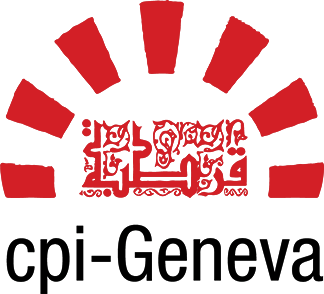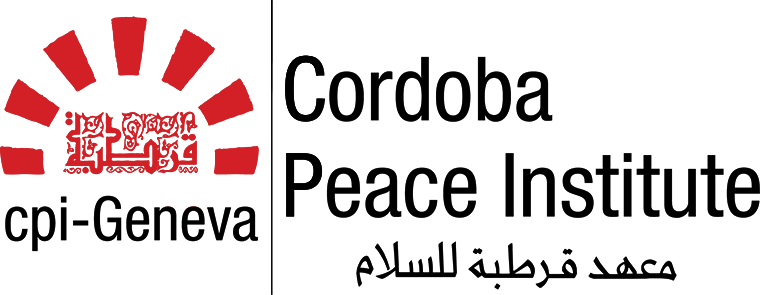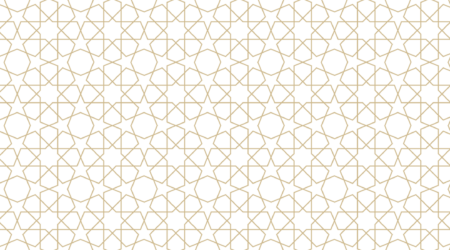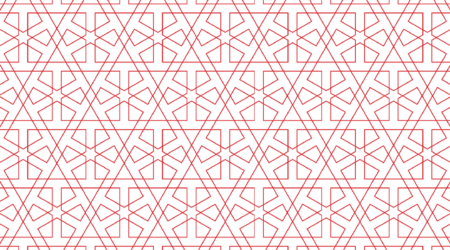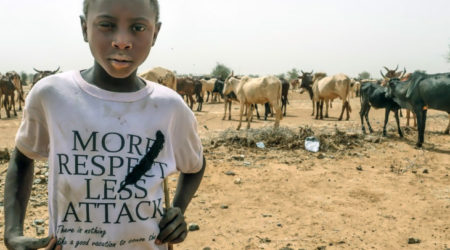War through Law: The Taliban Courts in Afghanistan – Book Review
Review of Adam Baczko’s book La guerre par le droit – Les tribunaux Taliban en Afghanistan (War through Law – The Taliban Courts in Afghanistan) published by CNRS Editions, in 2021.
By Ozair Khan
Review of Adam Baczko’s book La guerre par le droit – Les tribunaux Taliban en Afghanistan (War through Law – The Taliban Courts in Afghanistan) published by CNRS Editions, in 2021.
It’s been a year and a half since the Taliban takeover, and slowly more and more books are coming out to investigate the debacle of the US-backed government. But already a year after the Taliban toppling of the Ghani government, the French sociologist Adam Backzo published, in September 2021, La guerre par le droit – Les tribunaux Taliban en Afghanistan, or War through Law – The Taliban Courts in Afghanistan, a book offering key elements to understand the slow but steady rise of the Taliban. Backzo argues that the Taliban mostly won the war thanks to the efficiency of their judicial system in the territories under their control, which kept expanding over the last decade. At its heart, this book is a veritable condemnation of the post-2001 regime, whose justice system was riddled with corruption. To write this fascinating book, Backzo spent several years conducting field research in Afghanistan from 2010 to 2016, interviewing many Taliban judges, community leaders, regular Afghans served by the Taliban judicial system, and actors of the Western intervention. Despite how scholarly, timely, and meaningful this book is, it received little attention in the English-speaking sphere.
The book covers three main themes:
- The judicial insecurities under the post-2001 regime
- The structure of the Taliban judiciary
- The Restructuration of the social order through Taliban rule
In the following paragraphs, I will give more valuable pieces of information related to these three themes in this book.
1st part: Judicial insecurities
The launch of Jihad resulted in the transformation of the country’s social organization, which brought about judicial insecurities. Backzo illustrates this issue with various problems related to land tenure, particularly (p.84). Ownership of many lands is disputed due to the movement of population. Afghans assumed that with the post-2001 government in place, they could reopen juridical procedures. However, many became disillusioned due to the inefficiency of the legal system. Backzo offers a good overview of the Karzai and Ghani governments’ dysfunction. He provides interesting figures such as that only 3 percent of the total funds were allocated for the judiciary (against 6 percent for mine clearance), 45 percent of the judges did not have law degrees, or 57 percent of the judicial buildings had to be built (p.120-121). Moreover, Afghan courts were often not accessible to the Afghan layman due to their cost, widespread corruption, and the chronic failure of the police in carrying out the judgments (p.126).
Backzo furthermore points to some of the missteps of the toppled government, where Italy was tasked to supervise the establishment of a functional judicial system (p.115), even though it did not know Afghanistan and its customs. He also argues how the international community sabotaged establishing the strong judiciary, it was mandated to create. For example, he recounts that member states trying to help the newly established Karzai government circumvented the judiciary on many occasions to further their own interest, such as by pushing labor and commercial code reforms during the parliamentary break (p.115). Likewise, these Western forces have held themselves outside any legal framework, especially in their campaign of targeted eliminations (pp.145-151).
According to Backzo, at some point, the Western states involved in Afghanistan realized how the judicial system was ineffective and gave up hope of reforming it; and that is why it decided to deal directly with the local echelons of society. Backzo narrates that the West injected millions to promote an orientalized vision of customary law with Jirgas and Shuras (pp.159-160). But he affirms it didn’t amount to much since there was no coordination between parties (p.164). There were too many local councils, so if an individual did not find a jirga’s decision satisfactory, he could always go to another.
Backzo quotes US General McChrystal, who conceded that the Taliban became increasingly popular, even among people who did not entirely support them because their judiciary system was more effective (p.158).
2nd part: The Taliban judicial structure
Backzo explains that the Taliban do not see their re-emergence as a break from their previous regime but rather a continuation of their last Emirate. He points to how the judicial structure in the controlled territories was similar to the militant group’s centralized system from 1996 to 2001. Therefore, the Taliban were already used to running a judicial system. Thus, their courts’ judgments were highly predictable, so people knew what to expect when seeking arbitration through their courts.
Backzo explains that civil war situations do not necessarily entail lawlessness, contrary to what Western social sciences theorize. The Taliban-controlled areas after their comeback in the last decade are an excellent anti-thesis example. The court system in Afghanistan was fairly traditional, with courts of first instance, provincial courts of appeal, supreme courts, and courts of cassation. Besides, the judges’ selection was highly standardized. They are almost all graduates from Deobandi institutes in neighboring Pakistan, meaning they all studied the same curriculum (p.202). Moreover, to ensure impartiality in their judgments, the Taliban authorities required the judges to rotate every few months.
However, Bazcko also highlights the deficiencies of the structure of the Taliban judicial system (which, for Backzo, was, nonetheless, still more effective than the Karzai government’s). A main concern is that judges were not included in the most critical political affairs, decided by the highest Taliban institution: The Commandment Council in Quetta. Some of the judges also admitted they had to learn the job on the spot, saying there was much of a difference between learning the theoretical aspects of law and actually applying it. However, the most constraining matter for the Taliban magistrates was the absence of a dedicated police force. Therefore, they depended on military commanders to apply sanctions, although the judges were supposed to monitor these military commanders’ actions, which were sometimes young and out of control (p.265).
3rd part: Restructuration of the social order through law
One of the most potent effects of Taliban rule on social order, according to Backzo, is centralization. As seen in the 2nd part, the Taliban judicial structure is centralized. The Taliban are most notably trying to control the independent behaviors within its movement as much as possible. For example, to have a minimum level of coherence within the movement, its direction integrated strong and rather independent commanders in their supreme instances (pp.269-270). Another case of social restructuration tightly linked with centralization, according to Backzo, is the imposition by the Taliban of a national identity like at the time before the pre-soviet invasion, which denies the ethnic question, nonetheless favoring the Pashtun (p.295). At the beginning of the book, Backzo clarifies the evolution of the question of identity in Afghanistan’s history. For many decades before the Soviet invasion, previous leaders of Afghanistan did not think of Pathans as the sole deserving of the Afghan identity. Still, because Pathans have been in charge of Afghanistan since 1747, they had most of the authority at the expense of other ethnic groups. Then, the Soviets were among the first to promote ethnic identities “to divide and conquer.” During the reign of the warlords, these ex-mujahdin used ethnic affiliation to foster their support base. The post-2001 government exacerbated this feeling by nominating people by considering their ethnicity. As for the Taliban, they returned to a pre-1979 understanding, although they especially emphasized Islam as the main factor uniting Afghans. However, they never claim to be a Pashtun movement, but in practice, most of its adherents and heads are Pathans because they emerged from the country’s south.
Backzo highlights that, for the Taliban, the law is essential because it is a moralization project, and it is only with a truly moral community that God will grant durable peace to Afghanistan. Due to the inherently religious character of these courts, religious capital was now considered the principal social capital to work one’s way up in the administration. Backzo points out that because these men of law judge per Islamic rules, these decisions are harder to challenge (p.309).
Backzo is quite critical of Western propaganda on the harsh nature of the Taliban movement in trying to bend society to its image. He says that as a researcher, one cannot limit oneself to the discourse of liberals in Kabul because it solely gives a picture of the Taliban as oppressors, preventing researchers from comprehending how the Taliban gained more and more territories over the years through the effectiveness of their courts. With this in mind, Backzo dedicates a few pages (pp.97-104) to women-related issues and how each Afghan regime has historically used women’s fate to justify their policies. One of the communists’ main arguments for their efforts was to liberate women from backward traditions (p.97) Then, the anti-Soviet invasion Jihad groups in the 1980s wanted to give back women their honor which was soiled by communist forces (p.98). Later, the US-led Western intervention in 2001 was justified partly in hindsight to better women’s conditions. Women’s rights were instrumentalized, and the women in burqa symbolized women’s suffering. For Backzo, this is rewriting from the West. He laments how wrong it is to solely blame women’s current situation on the Taliban and not mention the overall social disruption since the Soviet invasion (p.101-104).
As for women’s lived experience under the Taliban, he reminds the readers that originally the Taliban was a movement to safeguard women’s integrity and private spaces against the war commanders. This is why the Taliban are this keen on regulating women’s conduct (p.101). Backzo also argues that, quite surprisingly, many of the Taliban regulations were not new but aligned with measures advocated by Burhanuddin Rabbani and Ahmad Shah Massoud (p.103).
Backzo touches on how under the Taliban, women were basically deterred from accessing judicial courts since they cannot visit the courts without a male guardian. But he also clarifies some misconceptions put forth by the West. He describes a difference in the level of social engineering between major cities and villages: He highlights that the Taliban are much stricter in big towns, which have been more affected by the West, while in the villages, the Taliban are much more flexible (p.104). They most notably tolerate women working outside, such as in fields, and not wearing traditional burqas. They most notably tolerate women working outside, such as in fields, and not wearing traditional burqas. Therefore, it was principally around 40’000 to 150’000 women in “Westernized towns” who suffered the most restrictions due to their lack of employment opportunities (p.102).
In his book, Backzo also focuses on the evolution of the Taliban’s decrease in strictness in their rulings. For example, he mentions that the Taliban do not want to be on the sidelines of the international community due to their links with Al-Qaeda, so their judicial system is solely geared towards Afghan challenges (p.202). To also prove this evolution, he cites the Taliban’s willingness to recognize more and more IHL since, throughout its various edicts, we see the fate of non-combatants is increasingly detailed. There is also a further emphasis on the impermissibility to attack schools or cliniques and that NGOs were now allowed to work on their territories (p.219). The Taliban started increasingly using Human Rights rhetoric, to the point half of the declarations on their website were related to this issue (p.221).
The Taliban’s aim to reform society also came by prohibiting Pashtunwali. Theoretically, Mullah Omar officially banned its use. However, Backzo narrates interesting, specific cases where local judges, faced with the pressure of applying strict provisions found in Islamic scriptures like in the case of adultery, instead resorted to using more lenient rulings found in Pashtunwali not to create tensions within the local community (p.246).
Backzo narrates also confirms the ’90s edicts on beard size were less applied in the 2010s, indicating an apparent change of attitude since the population was quite resentful (pp.312-313). But for punishments of higher crimes such as fornication, the people, especially in rural zones, see them in a good light (pp.316-317).
In conclusion, this book is a fascinating read. Backzo is quite impartial in his assessments, to the point that some might find him overly indulgent with the Taliban. Another excellent aspect of this book is that it is accessible to any reader unfamiliar with the country’s history. Afghans and students of contemporary Afghan history would enjoy reading the book.


